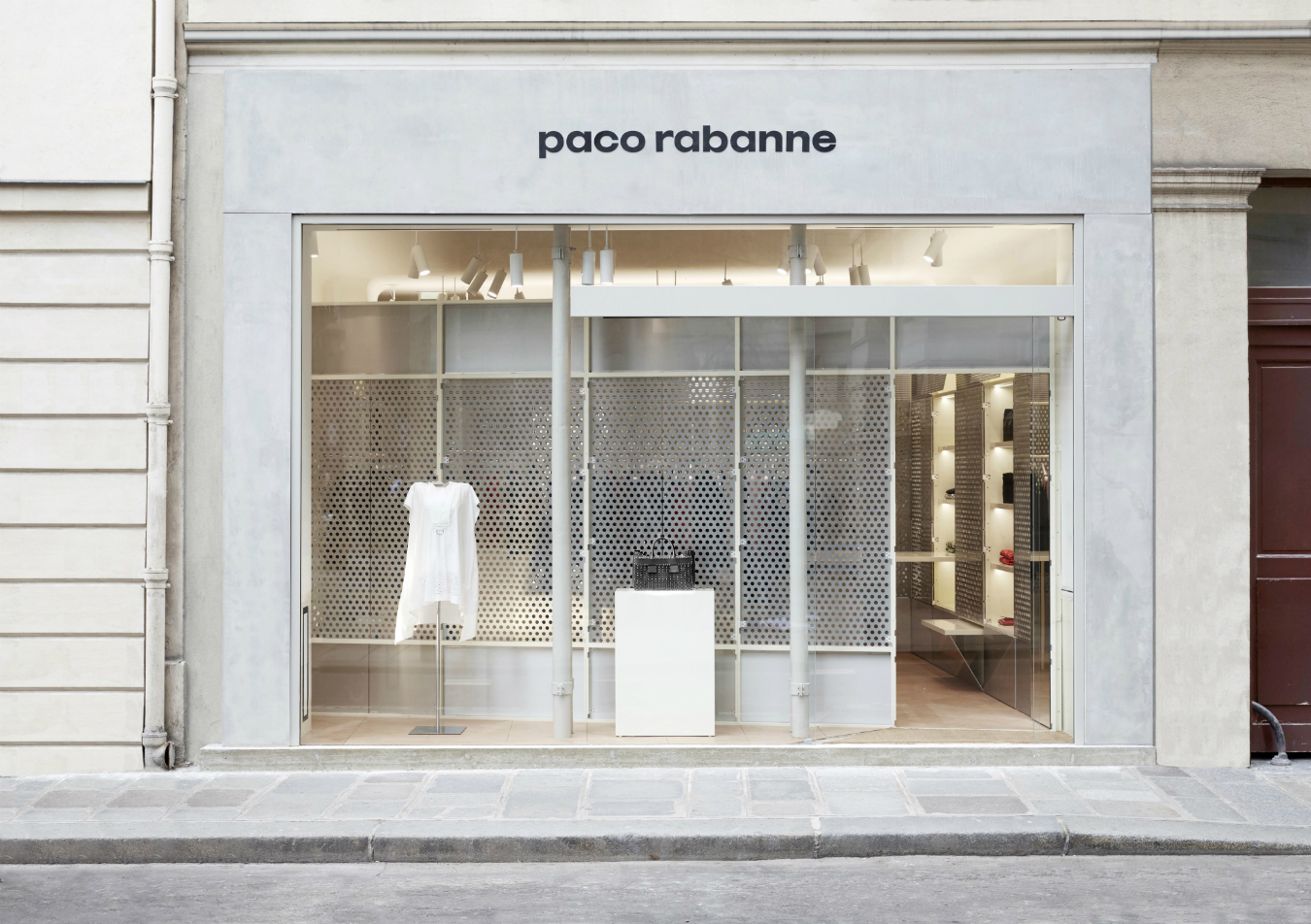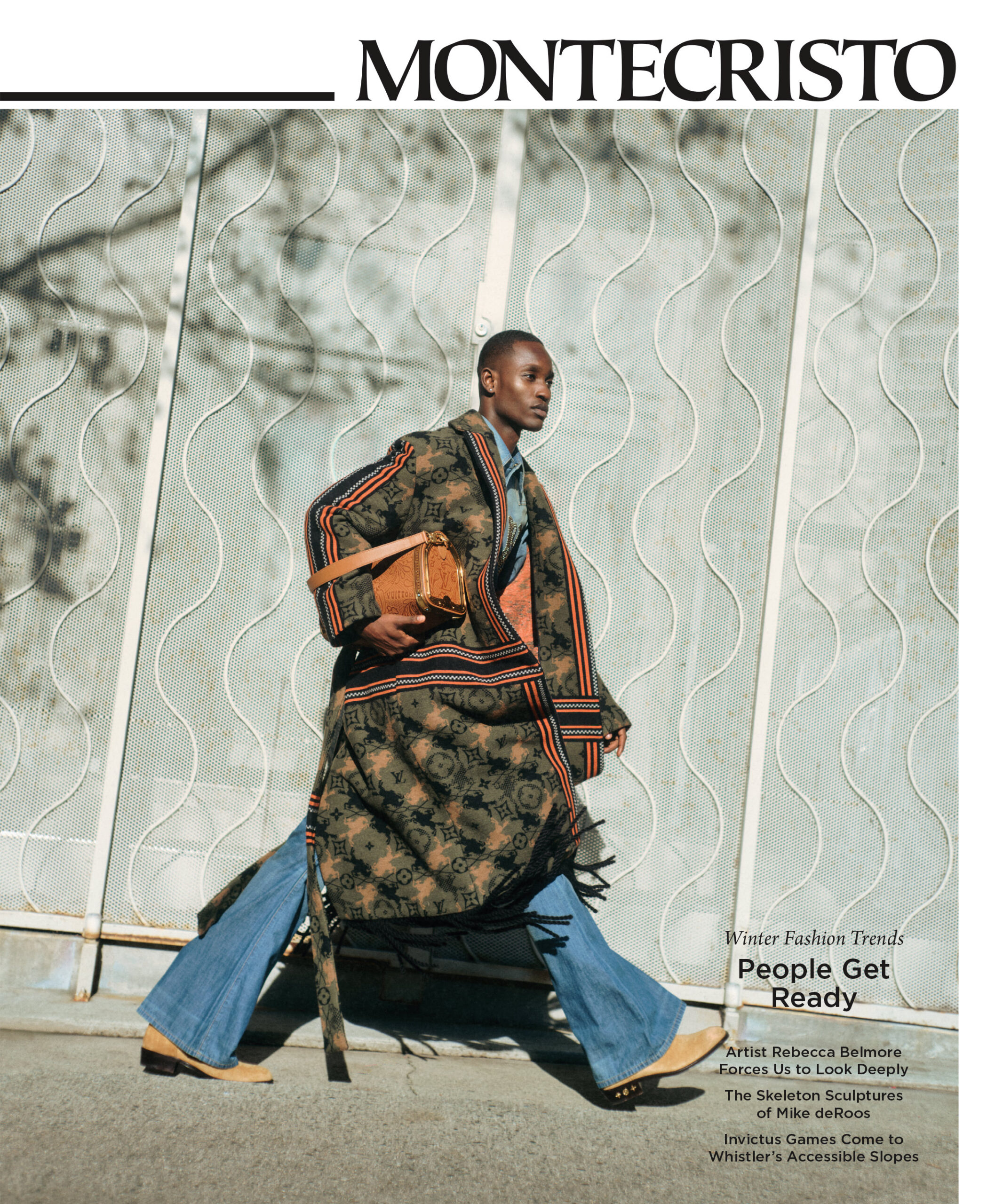A seemingly immovable and seamless sheet of glass separating passers-by from compact, metal-flecked leather purses and glimmering chain mail neckerchiefs glides soundlessly aside, and stately grey Parisian flagstones give way to tan floors made of geometric leather tiles at the new Paco Rabanne boutique on 12, rue Cambon in Paris. In keeping with the fashion house’s experimental, futuristic aesthetic, the outpost in the city’s well-heeled 1st arrondissement is organized around two main spaces: one, dubbed System, in which perforated, modular aluminum walls provide a customizable landscape upon which to display the boutique’s offerings, and its sibling—Loos—a completely lacquered room inspired by the functional architecture of Adolf Loos.
The store is unique in more than just its design: it is the first and only Paco Rabanne outpost to be opened since 2002. In fact, until the inauguration of the house’s rue Cambon flagship on January 20, the couturier’s pieces were available exclusively in select department stores and online outlets. In tandem with the launch of its new brick-and-mortar location, the brand has also reimagined its website, adding an online shop to the mix for those who don’t happen to live in the city of lights (though stores in London and the United States are rumoured to be coming soon, as well). It may have taken 14 years, but it was worth the wait.
Minimal and neutral—but by no means conventional—the space feels at once expansive and intimate.
An architect-student-turned-designer, Francisco “Paco” Rabaneda Cuervo was known in the fashion world for his drastic material experimentation, advanced look, and defiance of sartorial norms. Launched in 1966, his label’s collections through the ‘60s, ‘70s, and beyond made extensive use of—among other things—cellulose acetate, aluminum, hammered metal, rubber, paper, and plexiglass. He famously designed Jane Fonda’s costumes for the cult 1968 sci-fi movie Barbarella, and is recognized for his successful foray into the world of perfumery (his eponymous fragrance continues to boast a robust following). He retired from the brand in 1999, but Julien Dossena, its creative director since 2013, continues to honour the founder’s vision as much with the house’s designs as with its new Parisian iteration.
Working with Belgian architects Kersten Greers and David Van Severen, Dossena employed contrasting metallic, leather, and aluminum elements to act as a complementary foil to the boutique’s selection. Minimal and neutral—but by no means conventional—the space feels at once expansive and intimate. In homage to the founder’s long history with perfumery, an aroma specially developed by prolific French nose Dominique Ropion—known best for his work at Frederic Malle—wafts through the shop, a sharp yet supple odour meant to echo the store’s materials.
The Basque-born Rabanne was raised in France, attending Paris’s École Nationale Supérieure des Beaux-Arts before going on to work for the likes of Dior, Givenchy, and Balenciaga. It is therefore fitting that the brand’s retail resurgence should take root in la belle ville. Indeed, the ambitious flagship succeeds in acutely distilling the Paco Rabanne aesthetic: disparate, playful, and ultimately harmonious.
_________
Lookin’ good. Read more from our Style section.










